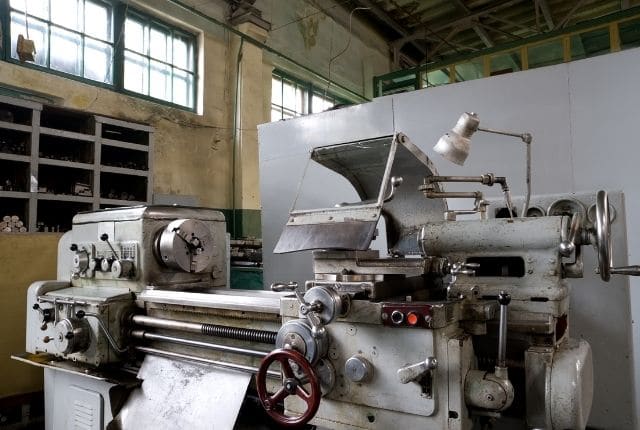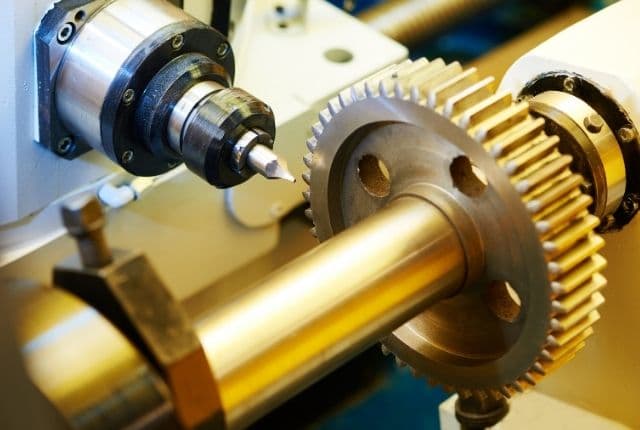Disclaimer: As an Amazon affiliate, I may earn a small percentage from qualifying purchases. This is at no extra cost to you. Learn more here.
Last Updated on September 21, 2024 by Larry Edwards
A metal lathe, also known as a “metal turning lathe,” is the most versatile of all machine tools in the metal shop. They are great at shaping metals into various cylindrical forms.
You can use them to create anything from simple coffee cups and bicycle frame buildings to ornate lamps and decorative items.
In this article, you will find a comprehensive guide on everything you need to know about the major uses of metal lathe machines.
With the right equipment and know-how, you can turn your ideas into reality with these wonderful machines.
When was the metal lathe invented?
After Andrey Nartov and Lionardo Da Vinci both invented the carriage and compound slides, according to resources around the web, the first metal lathe was invented by Jacques de Vaucanson around 1751.

Later in the early nineteenth century, metal lathes were improved with the invention of a lead screw by Joseph Bramah and James Nasmyth.
In 1836, Henry Maudslay followed his design for an automatic feed mechanism to move material across the bed and gave this machine perfection.
The main difference between a metal lathe and a mill
The main difference between a metal lathe and a milling machine is that a metal lathe can only rotate the workpiece in two directions- forward and backward.
Whereas, a milling machine has the ability to move in three dimensions and can be programmed with different patterns, whereas a conventional metal lathe cannot.
For further information about the major differences please check this article.
What are the parts of a Metal Lathe?

Here is the detail of the primary parts of any conventional metal lathe machine:
- Headstock: There are two types of the headstock. The first one is gear type, and the other one is belt pulleys, where you need to change the speed manually by changing the belts.
- Spindle: It is attached to the headstock, and you will see a jaw chuck connected to it. This part is to hold the workpiece during rotation.
- Bed: The base of the lathe machine, There are 4 types of bed- V group, flat group, Gap bed, Combination bed. A combination bed includes all the types of beds into one.
- Carriage: There are two parts, 1. The saddle that holds the tool posts, cross slide, and compound rest. 2. Apron that holds the linear slide is a square part that attaches to the carriage assembly, and on it, there is mounted a split nut. The split nut allows the operator to engage or disengage the lead screw to move the carriage along the bed by hand.
- Lead screw: The lead screw is the part that mounts on the front of the lathe, and it gives the operator the ability to move the carriage along the length of the bed. It’s a long threaded rod.
- Tailstock: Consist a dead center to strongly hold workpieces to perform drilling, tapping, dying, etc. It is the edge of the lathe.
- Chip Tray: Above the legs, there is a tray. This is also known as chip span, and it is placed at the lower side of the bed and right above the leg of the lathe machine. The main function of the chip span or tray is to collect or carry all hot chips removed from the workpiece during operation.
- Legs: The stands or legs in a lathe machine are used to hold the lathe machine and elevate the lathe bed to a working height. Legs are the most bottom portion and carrying an entire load of a lathe machine.
How heavy is a metal lathe?
The average weight of a benchtop metal lathe is about 100 to 150 pounds.
Heavy gunsmithing lathes, which can be as much as 400 pounds or more, are best suited for professional use in a manufacturing facility and require specialized tools to move them safely onto the work table.
Can I use a metal lathe to turn woods?
Yes, wood is often turned on metal lathes. I have turned myself! But as you are not using traditional chisels here, it may seem a bit tricky.
Woodturning projects are more challenging than other types of turning because the material tends to be much softer and fragile and doesn’t hold a basic shape as the metal objects do.
Start with something easy to turn like basswood before working up to hardwoods such as cherry or oak.
Blankets come in handy when using hardened woods, especially since they’re not made from rubber, potentially damaging the machinery if rubbed across its surface while spinning at high speeds.
Conclusion
I really hope this article has helped answer some of the questions about what metal lathes can do for hobbyists both new and old!
If not, let me know where things have fallen short and we’ll work together to improve upon them so they will be useful for all readers going forward.
Thanks again for stopping by.
Turn Big, Turn Safe. Welcome to the turning world!
